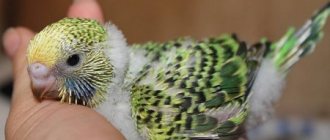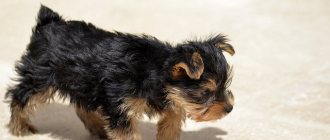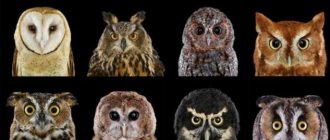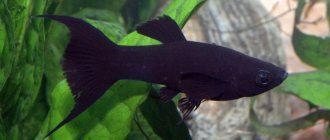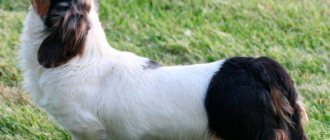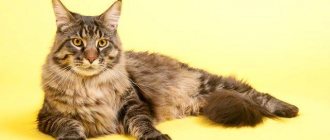The article contains fascinating material about three-hybrid parrotfish - exotic and spectacular inhabitants of the aquarium. Beginners and experienced aquarists alike are captivated by bright and colorful funny fish. Asian breeders made peace-loving parrots popular for the sake of commerce by deforming their body and depriving the males of the ability to fertilize, but giving them an original appearance.
| Full name | Parrotfish. Parrot fish. |
| Kinds | ● Cone-headed; ● Cetoscar – 2; ● Chlororus – 18; ● Hipposcars – 2; ● Skarov – 52; ● Calotoms – 5; ● Cryptotomuses; ● Leptoscarov; ● Nikolsinov – 2; ● Sparisomas – 15 species. |
| Color | Natural colors are yellow and red. The other color is artificially created and gradually becomes pale. |
| Water | t (temperature) 24–28 degrees; pH (balance of acid and alkali) from 6.5 to 7.5. kH (hardness level) from 5 to 7. |
| Feed | In nature, they feed on coral polyps, mollusks and bottom animals. Aquarium fish are fed dry and live food: bloodworms, tubifex, shrimp, frozen minced sea fish and always fresh herbs. |
| Compatibility | Suitable neighbors: barbs, catfish, ostronotus, black knives, aquarium arowanas, cichlids. You cannot add fish that are 5 cm or smaller in size. |
| Lifespan | 7-10 years |
Description
The parrot fish has an extraordinary and bright appearance that is memorable. The unusual body shape, flattened on the sides, funny cheeks, and often a slightly open mouth look intriguing. The outline of the head resembles the beak of a parrot, which is why the very name of aquarium fish is similar. Aquarium parrots grow up to 30 cm. Body size depends on the type of parrot. There are no red parrots in natural conditions. The fish in the pet store come from breeders.
Types and colors
These aquarium inhabitants are divided into 100 species. But the most popular are:
- red parrot - typical color is red, sometimes orange. Can grow up to 25 cm;
- scar - grows up to 20 cm;
- Bone-fronted (Japanese) is the largest species and the most aggressive of the parrots. Requires careful selection of “neighbors” in the aquarium.
Parrot fish are also classified by color. The most common color is red or bright orange. The natural colors of parrots are lemon, yellow, and white. In addition to plain ones, there are also variegated colors. Available in: marble, diamond, pearl, panda, blue (blue), etc.
lemon
yellow
blue
panda
pearl
diamond
marble
white
There are individuals with a tattooed color. Then a drawing is applied to the body of the parrot aquarium fish. These are experiments of breeders from Asia. The variegated colors are created using carotenoids and chemical dyes. When painting and tattooing, aggressive chemicals and tools are used to artificially secrete mucus.
Nutrition
As for the nutrition of these amazing fish, they are absolutely not picky in this matter. They have an excellent appetite. Therefore, those who decide to buy a Parrot fish must simultaneously purchase food for their new pet.
Their diet includes dry and live food; they absorb everything with great pleasure. Fish love bloodworms, tubifex, and shrimp. Their menu must include plant foods. The older the fish gets, the more its appearance loses its bright colors. You can support the variegation of Parrots with the help of carotene or shrimp.
Residues of food must be removed from the aquarium to help keep it properly clean. You should not overfeed your fish; it is better to accustom them to three meals a day.
Maintenance and care
Keeping parrot fish requires little work. They are very mobile and leave a lot of feces, so 20-30% of the water is changed weekly. When creating decor, artificial algae and driftwood are used, where the aquarium fish, parrot, can hide. The living do not use it. The parrot undermines and destroys them.
Aquarium
When choosing an aquarium, keep in mind that the parrot fish grows up to 25 cm and needs space. Volume from 200 l for a couple. Length from 70 cm. The aquarium must have a lid or net on top so that the parrot does not jump out.
There is no need to install special plants.
Soil 5–6 cm high from small pebbles with smooth edges is poured onto the bottom. They dig nests in the ground.
In parrots, each inhabitant of the aquarium must have its own home. The aquarium should have fragments of pots and artificial driftwood for each fish.
Equipment
Mandatory equipment is:
- filter;
- aerator;
- pump for easy movement of water;
- lamp for dim lighting;
- thermometer.
The backlight should be dim, otherwise the color of the fish begins to fade.
Interesting facts about the Parrot fish
The Marine Parrot Fish, which lives naturally in the Red Sea, the Mediterranean Sea, and the tropics, feeds on coral polyps and reaches a meter in length.
Before going to bed, individuals secrete mucus, it contains antibacterial substances, and it envelops the body. Thus, the created shell hides the smell from predators and protects against parasites. At dawn, the fish gnaw through the cocoon they have made and go in search of food.
At high tide, they enter lagoons, where they bite off their favorite delicacies - coral polyps - with strong jaws. In the pharynx, food is digested into fine dust. The fish cleans the coral of dead rocks, which it turns into sand.
Its meat is delicious, fishermen use all means to hunt the Sea Parrot, but catching it is prohibited in order to preserve coral reefs.
Compatibility with other fish
Parrots get along well with fish:
- Catfish.
- Barbs.
- Ostronotuses.
- Aquarium arowanas.
- Black knives.
- Cichlids.
But fish smaller than 5 cm are not compatible with parrots; they can accidentally feed on them.
And also fish that feed on algae. For example, angelfish, because aquarium parrots make shelter from algae.
Natural habitat
In the wild, Pelvicachromis pulchera lives in small bodies of water with dense vegetation in eastern Nigeria, Western Cameroon and Eastern Benin. A fish of a calm disposition that prefers quiet, stagnant, fresh water. The parrot will not experience discomfort from slightly brackish water, since it is distinguished by its endurance and unpretentiousness.
In the wild, Pelvikachromis pulcher feeds on detritus and worms, but does not disdain caviar and the larvae of other fish. Periodically nibbles leaves of green plants. Representatives of Pelvicachromis pulchera, presented in pet stores, are raised by private aquarists or on fish farms. And individuals caught from natural bodies of water are not suitable for import for further sale to aquarists.
Diseases
The immunity, like that of other cichlids, is strong. The disease goes away on its own. Treatment begins if symptoms of fish diseases appear:
- white stool;
- white lumps (like semolina) on the body and fins (ichthyophthyriasis);
- blackening of fins (color change is a sign of intoxication);
- lying on the bottom, spitting food (overeating, poisoning);
- wounds on the body.
The main reasons are poor water quality, overcrowding of the aquarium, and contact with other sick fish. If you rarely change the water, then intoxication occurs with your own feces. Then the water change should occur twice a day every day.
For ichthyophthyriasis, it is effective to increase the water temperature to 30 degrees Celsius, as well as the use of drugs containing copper.
Feeding
Due to the small mouth, not all food is suitable for Parrot Fish. They leave a lot of waste behind, and the aquarium has to be cleaned more often. Ready-made flakes, granules, and tablets for fish are recommended as food. Also, individuals will not refuse bloodworms, brine shrimp, shrimp, and worms.
To prevent the fish from losing their bright colors, they are given vegetables containing beta-carotene and protein (zucchini, bell peppers, lettuce). They are fed in small portions, twice a day; individuals should not eat too much to avoid obesity; they have a fasting day once a week.
Reproduction
Breeding parrotfish at home in an aquarium is impossible. Males of this representative of cichlids are sterile and spawning is impossible. In the second year of life, pairs form, nests are dug, and eggs are laid. A couple of days later she dies. Fertilizes the eggs of the female of other cichlids. Then the offspring from breeding differ in appearance from parrots.
Sex differences
Distinctive features of males and females appear during the spawning period, when they reach the age of 1.5 years. In females, a pear-shaped tubercle is formed in the tail area, and in males, a cone-shaped tubercle is formed.
Breeding
Individuals are capable of bearing offspring from the age of one and a half years. In order to begin this process, it is enough to increase the temperature and carry out a water change. Before this, it is advisable to transfer the parents to a diet consisting of live food. The fish split into pairs and look for “houses” for themselves, where the females then lay eggs.
When this happens, parents begin to carefully guard their potential offspring. Accordingly, if any fish appears on their territory, the male will attack it. Therefore, parrots should be placed in a special container in advance, or, conversely, other neighbors who may be curious should be removed.
During one spawning, the female lays up to 300 eggs. A few days later, larvae emerge from them, which the parents transfer to specially dug holes in the ground.
After five days, the fry can already move independently and feed on small food such as plankton. Parents feed them during this period. They chew large food and spit it out. At first, the offspring stay in a flock and are in no hurry to leave the shelter. The first movements are carried out in the presence of parents. Guardianship lasts up to approximately 2 months. However, despite this, not all eggs survive. In this case, ordinary natural selection comes into play. Only the strongest of their kind survive.
Yellow parrot
Types of colors
Taiwanese breeders did not stop with the initially obtained variation and continued their experiments. As a result, Parrot Cichlid was born in a variety of colors.
- Pearl (Kilin Parrot) - multi-colored parrots with small white speckles over the entire surface of the body. Obtained from crossing with Horn cichlizoma.
- Marble (Marbled_Parrot) – black stripes and stains on an orange background.
- Panda (Panda Parrot) – large black spots on a white background.
- With dark gray stripes on a white background (Parrot Cichlid Cichlid).
- With black spots on a red background, fins and tail are black (Parrot Cichlid Black).
Artificial colors
Having exhausted the possibilities of selection, the creators of aqua birds found a way to artificially change the color of their body. The body of a parrot can be given almost any color: purple, green, blue. There are fish with tattoos. Drawings are applied to their scales: abstractions, ornaments, hieroglyphs, flowers, specks. To change the color, injections of special dyes are used. This harms the health of the fish and shortens its lifespan. Often, an abnormally bright pet lives no more than six months and dies due to weakened immunity.
Artificial coloring is not permanent. Over time, it will turn pale, the fish will become normal, orange. Green specimens become pale pink.
